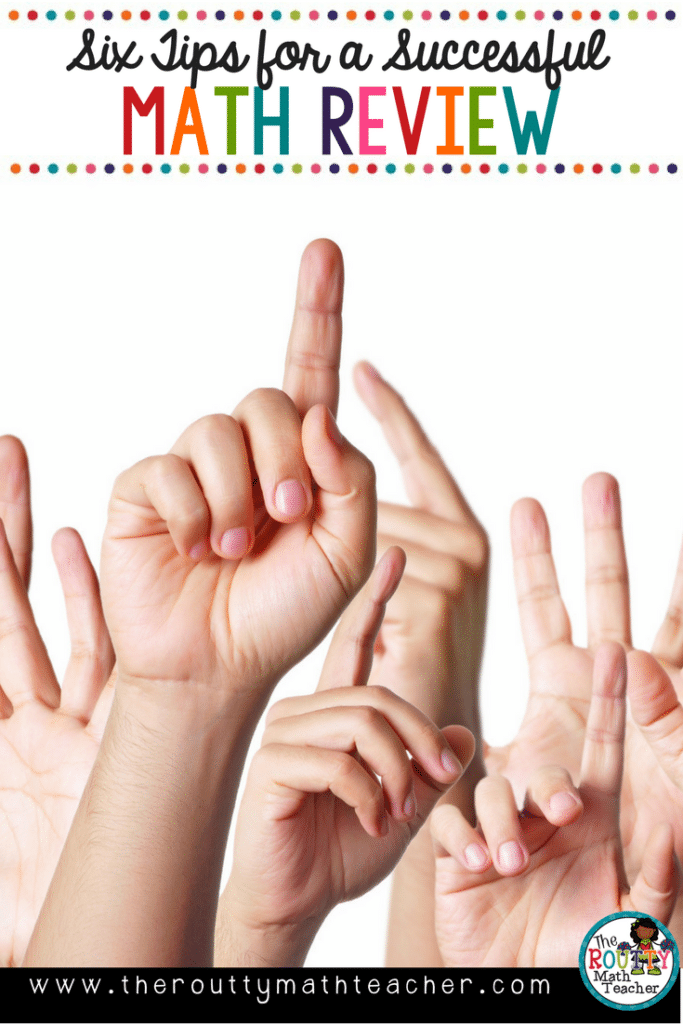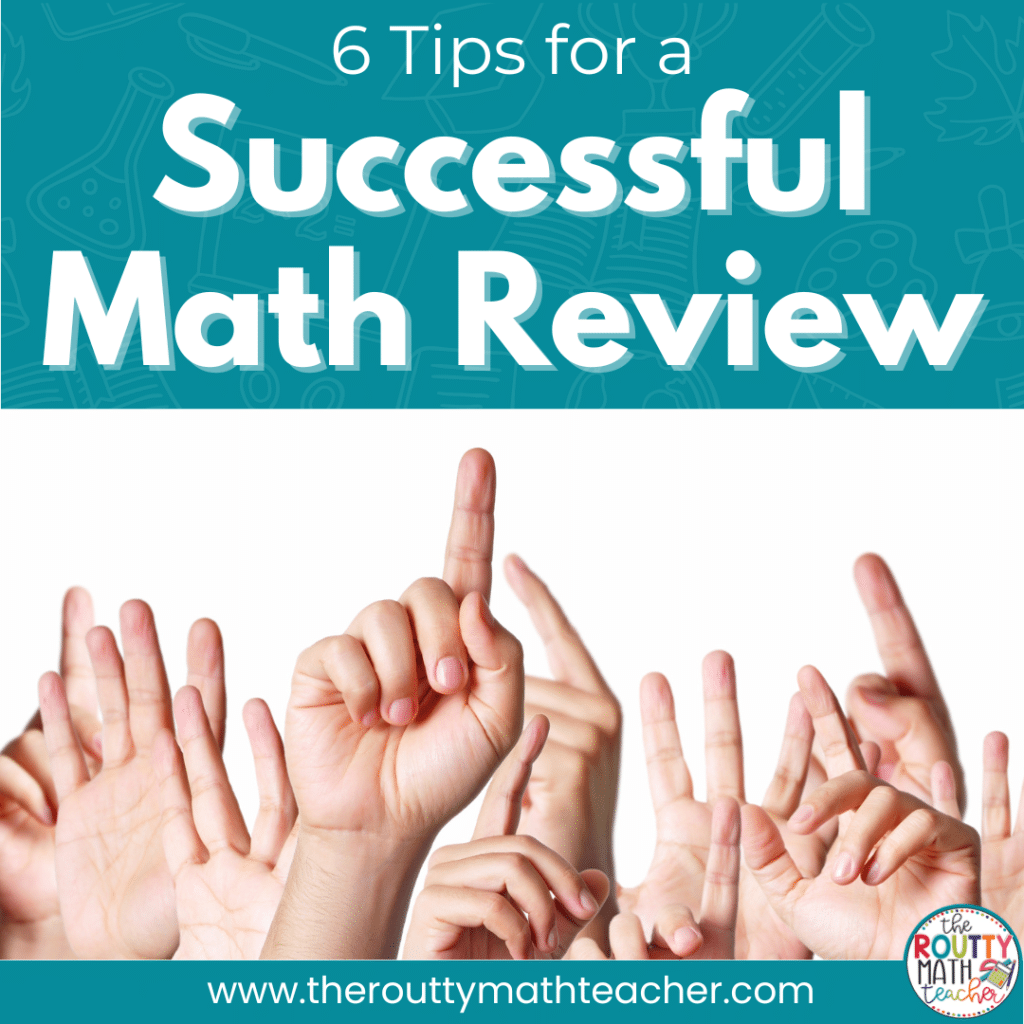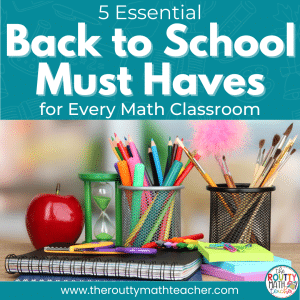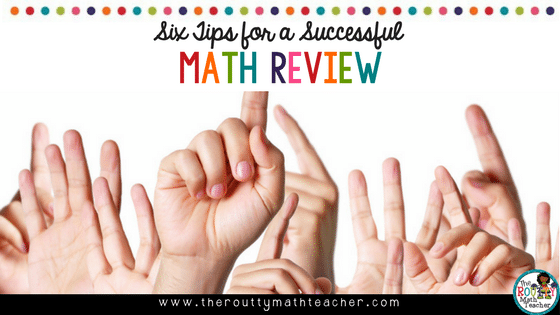
During this time of year, many of us are faced with the challenges of preparing for a state assessment to evaluate our students’ understanding of grade-level content and skills. Determining the best way to review, especially in the midst of teaching the remainder of your required curriculum can create a lot of stress for students and teachers alike. With the goal of helping you create a top-notch review in mind, I’m sharing six tips for creating a successful review.
1. Engaging: I’m sure we can all recall a boring test review that we’ve been required to do over the years. It probably didn’t make you very excited to 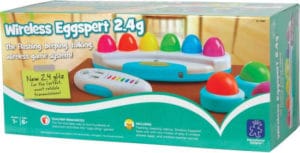
2. Cooperative: Creating a review activity where students have to work together not only provides students with a peer they can communicate mathematically with but also an opportunity for students to collaborate on how to accomplish the task and complete the review problems. In addition, if you have a class of students who can compete with each other respectfully, adding a little competition to the review will create additional engagement.
3. Incentive-Based: We know that many of our students are incentive-driven, so why not add an incentive for completing the review. Incentives can be team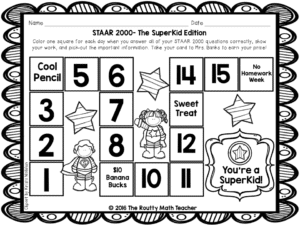
4. Accountable: While you may want to avoid giving a boring review where students sit at their desk and complete a lengthy assignment, it is important that students are held accountable for their work. Assigning a specific set of problems for students to submit for grading or as a formative assessment will hold students accountable for the work. Note: While I do not usually grade test reviews, I will often collect the students’ work to review formatively or we will “grade” the students’ work together as a class.
5. Short: We know that our students have short attention spans, so creating a review that is short will help students stay engaged in the task. I would recommend keeping the review to 30 minutes or less; however, if your review is super engaging, the students won’t mind a lengthier one.
6. Easy to Duplicate: We’re all busy right? Some of the most fun reviews are patterned after popular games such as Jeopardy, Who Wants to be a Millionaire, etc. The best part about these games is that there are easy-to-use templates for them. All you need to do is add your questions. Finding a format that is easy-to-use and replicate will give you more time to focus on other aspects of your job. You can even have students get in on the fun and create their own review games for a topic or unit of study.
With the inclusion of these elements, reviewing for a summative assessment, unit test, or a quiz can be a fun and worthwhile experience for both teachers and students. Below, you will find a short list of my favorite review activities with links to more information about how to use the strategy. Check it out!
A. STAAR 2000– This is by far my favorite test-prep activity. It’s really not a teaching strategy, it’s a reward program, but it proved to be extremely motivating at a time of year where my students were tired of working and tired of preparing for “the test.” It’s fun and allowed me and my students to track data, celebrate successes, and make a plan for growth.
B. STAAR 2000: The SuperKid Edition– This is an extension of the program above that allows students to focus on their own personal progress. I added this component when I had a group of students who were performing pretty well individually and I wanted them to work toward pushing themselves as they had to have a certain number of questions right in order to collect a space on the board.
C. Four Corners– This is one of my all-time favorite teaching strategies and is an awesome way to review multiple-choice test questions, especially those where your students have the most trouble because this strategy includes an opportunity for students to justify their thinking.
D. Kahoot– Many of you may already be familiar with this tool, but it’s one of my favorites as well. It’s interactive and fun and can give new life to a boring test review. Give it a try!
E. Rock and Roll Math Problems– This is a great strategy for reviewing test questions or for reviews that have multiple choice answers. This strategy works best for reviewing a few problems, maybe the most missed ones from an assessment or review, but it’s very effective. Be sure to download a free copy of the “Rock and Roll” activity sheet.
F. Who’s Correct?– What I love about this strategy is that students have to analyze and justify someone else’s thinking– a very powerful way to infuse new ways of thinking about a concept or skill. It’s a good test review strategy when reviewing content that students often misunderstand or when students’ responses to a multiple-choice item are varied.
G. Circuit– My students love this one and it’s super versatile! This activity is similar to a scoot; however, students follow the path of the answer they choose. Task cards can easily be used with a circuit. Just be sure to attach a correct answer to another card so that students can move easily from one card to the card that has the correct answer to the previous card. Check out an example using the link above.
H. Quiz, Quiz, Trade– This is a Kagan cooperative learning structure that gets your students up and moving! The basic idea is that each student gets a task card, quizzes a partner, and then switches cards with the partner. Then the process starts all over again. Because students have to understand the task and be able to justify the answer to the card they are using so that they can quiz someone else, they have to become an expert on that card. Click the link to read more about this activity from “Minds in Bloom.”
I. Plickers– This is a super cool way of assessing students and collecting the data real-time. After downloading the app to a smartphone (no student devices needed) and supplying each student with a plickers card, you present a multiple choice question via the plickers website. Students orient their card in a manner that indicates their selected response. The teacher then scans the students’ cards with the smartphone app. The app collects the data and displays the class’s performance real-time. You can then analyze the data together as a class on a projector screen.
Happy Reviewing!
Sound Off! How do you like to review with your students? Respond in the comments below.
